For the Royal Northern College of Music Archives, there was to be one very specific celebration in 2020. Of one of the most interesting musical establishments the city of Manchester has ever hosted, would have turned one hundred years old in 2020. The thing is, though, you’ve probably never heard of it.
It was called the Northern School of Music and it was a marvellous place. Over a series of articles, I’ll explore some of its most notable characters and its humble beginnings. The tales of the school in the Second World War are uplifting and full of the make-do-and-mend mentality in order to keep music alive. I’ll share with you one of the loveliest love stories in the history of Manchester’s music scene. Most relevant to the Royal Northern College of Music itself, I’ll tell you of one of the biggest dramas in the college’s history – how it actually came to be (why there’s not already a fabulous over the top opera about it, I’ll never know).
Firstly, however, let’s get to know the Northern School of Music itself.
The Northern School of Music
It was founded in 1920 as the Matthay School of Music. Named after Tobias Matthay (1858-1945, pianist, pedagogue) whose teachings had a profound impact on the school’s founder, the most remarkable Hilda Collens, the school was a music education institution unlike any other. It insisted that the training of music teachers was a special art. After all, just because you can play a tune on a piano, doesn’t mean you can therefore bestow that skill to 30 children under 10 in single classroom three times a week. To effectively train musicians, you need certain skills – you need to be a capable musician yourself and you need to be able to translate the theory and practice of music-making into a structure which can be absorbed by young minds.
It sounds so very sensible. So why were there not other schools like it?
Simply put, training music teachers wasn’t what most music universities were interested in. Attracting and training the most brilliant and best soloists, orchestral musicians, opera stars and ground-breaking composers was the bread and butter of most of the Western world’s music universities. The aim was to train top quality musicians who would maintain and hopefully develop their country’s arts and culture traditions.
Absolutely nothing wrong with that, of course, but these students do not simply emerge with potential and promise at aged 18. To qualify for these elite institutions, they must have years of training in their pockets. That can only start with a specially trained music teacher at their school.
That’s what the Northern School of Music set out to deliver, and it succeeded. It had its star performers, of course. Hubert Harry (1927-2010), the 9 year old soloist who became an internationally known pianist and teacher; Alfreda Hodgson (1940-1991), the highly respected singer who appeared as a soloist with most, if not all, of Britain’s premiere orchestras; and of course Ida Carroll (1905-1995), a young pianist turned double bassist, who started as a student, became the school’s secretary and tirelessly steered the school through its final two decades as its principal.
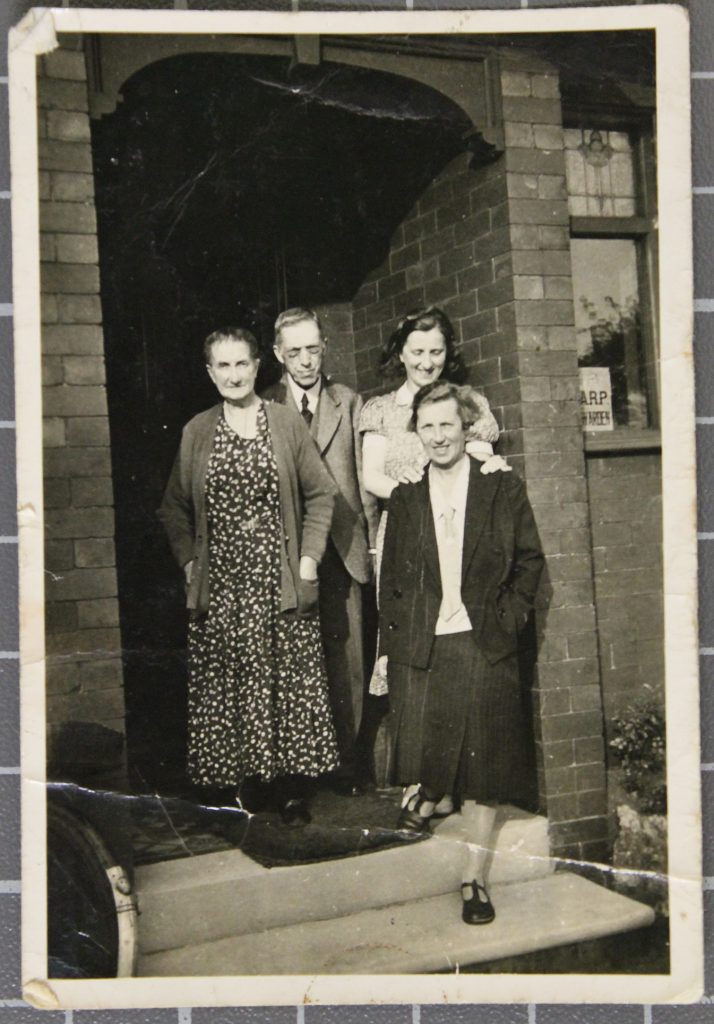
Ida Carroll (back right) at her home in Disdbury with her mother, father and we think her sister, c.1940.
In the window is Ida’s ARP Warden sign, a role she took up during WW2.
With thanks to the Ida Carroll Trust.
An undeniable identity
Founded by women and run by women, it was in a league of its own. It expected nothing less from its students than loyalty to their studies and respect to their teachers. Talking to the school’s alumni, it seems that very few people were unwilling to give it, such was the impact of the school on their careers and lives. Many describe it as having the atmosphere of a family, loud and busy but trusting and trustworthy.
The school itself occupied a large building on the corner of Oxford Rd and Sydney St in Manchester for its last few decades, knocking through to other areas to create this rabbit warren of corridors and mismatched walls. You entered the building to the languorous “hello” of the bursar Geoffrey Griffiths, behind his omnipresent tobacco pipe (called Percy). Up the old stairs to the practice and tutor rooms and up, around and through, to the recital room at the very top of the building. How the poor students managed to bring their percussion, double basses and more up those steps every time, I can only sweat to imagine.
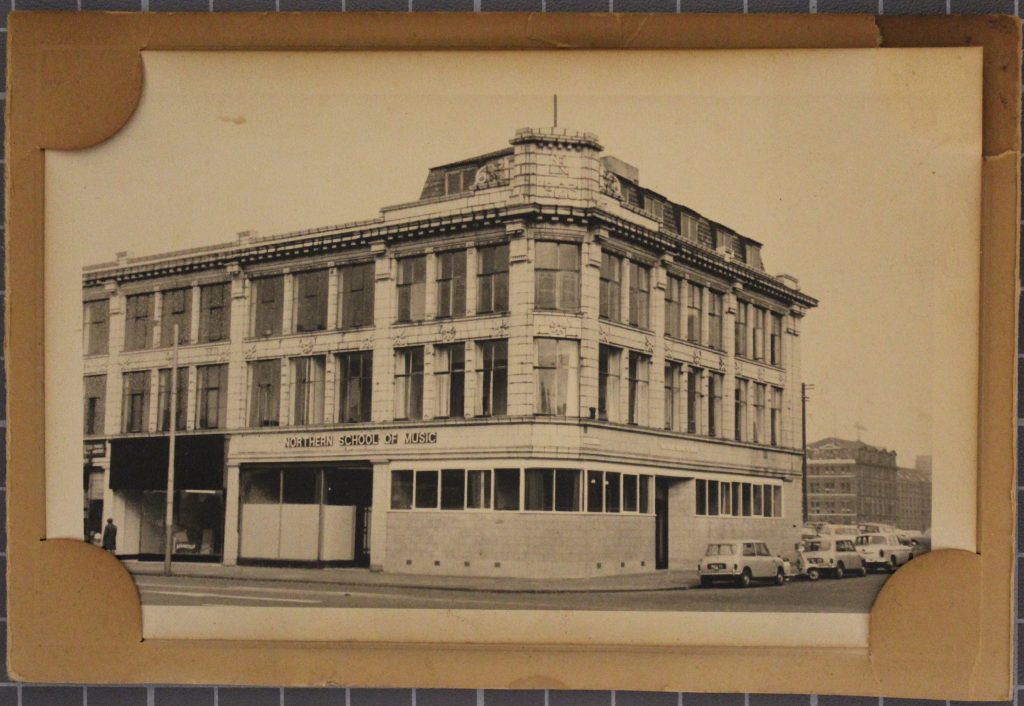
The Northern School of Music building on Oxford Road, taken from All Saints Park, c.1960.
With thanks to the Ida Carroll Trust.
There was a Junior School held every Saturday morning until early afternoon, which ended up with a student body of hundreds.
The school also recognised that not everyone who wanted to learn, could become a student, so it opened its doors during the evenings once or twice a week to teachers wishing to gain extra skills in music and teaching methods.
The holiday courses in music were held annually for decades, always in the summer months when teaching was minimal. They attracted musicians and teachers from across the country, to learn about different teaching practices and techniques, different musical careers and developments in both the music, performance and education sectors.
Old Students’ Association
It had one of the most effective and active alumni associations I’ve ever encountered in an archive. The Old Students’ Association supported the school’s activities such as concerts and raising funds for bursaries, pretty standard stuff. But it also donated to some very interesting charitable causes including the sponsorship of a child in a Barnardo’s Home. Via the “Barnardo’s Fund” the OSA “adopted” two Raymonds (they must have liked the name), a Keith and a Margaret. They would send presents to the children and sometimes an alumna or other would visit to take them out for the day. The attention of a huge and musical family must have been somewhat overwhelming sometimes, but I sincerely hope that the children have had fabulous lives supported by their enthusiasm.
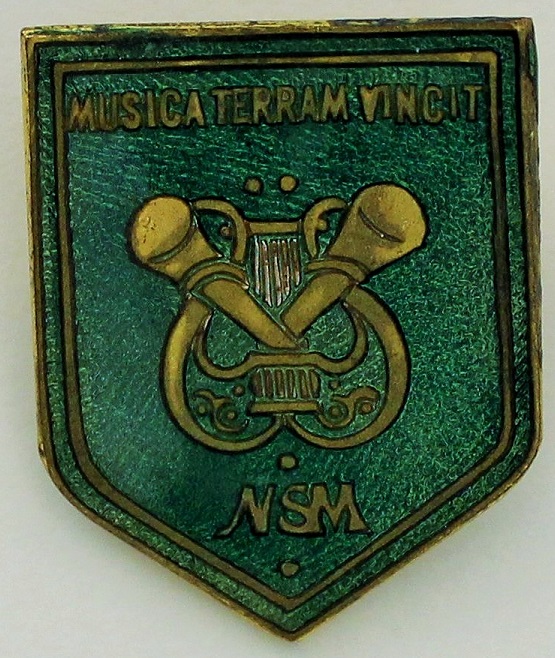
The Northern School of Music crest on an enamel badge, donated by the family of NSM alumna Kathleen Collins, c.1970.
The motto reads “musica teram vincit”, loosely translated “music conquers the world”
A unique curriculum
The school itself wasn’t afraid to branch out into wider curricula. You studied your instrument and practiced teaching techniques, yes. You also studied musical theory, and the history of music (a topic so valuable and fascinating yet so lacking in modern courses). You also studied elocution and movement improvisation. The idea being that you left not just a musician and a teacher, but with a sort of holistic skill set that would see you triumph over even the most challenging classes.
Elocution and speech class started to evolve into something unique in and of itself. It wasn’t just about swimming your way elegantly through tongue twisters but was serving a diversifying need of actors, including radio work. In the 1930s, the school advertised lessons in “voice production for the microphone”, recognising that many actors trained for the stage could not adjust their talent for the studio.
Stage plays were still very much the thing, however. The Speech and Drama Department started with delivering one act dramas but with a special significance. They weren’t taken from famous repertoire nor were they easy exercises for their students. Just before the Second World War, they took the stage at Manchester’s Central Library, and making the most out of the all-female cast, performed two recently published dramas. “Women at War” by Edward Percy dramatised the feelings of the Civil War through the eyes of the wives on both sides. “Unnatural Scene” by Kathleen Davey, described as “a play for and about women”, which debated the merits of martyrdom for less than worthy ideals in educating “gentlewomen”. Both interesting commentary on women’s roles and the tensions at the time.
The story continues
I hope I’ve whetted your appetite for more of the school’s story. The archive and memories of the students are both full of fascinating features. Thanks to the National Lottery Heritage Fund, we now have the resources to explore them in greater detail.
To read Part 2 of the series – click HERE
In the meantime, to learn more about the archive, head over to the website https://www.rncm.ac.uk/research/resources/archives/
For hundreds of digitised images from the Northern School of Music’s various collections, visit our friends at Manchester Digital Music Archive https://www.mdmarchive.co.uk/exhibition/688/a-2020-legacy:-the-centenary-of-the-northern-school-of-music
For a sneak peak at the history of the school, discover some key dates on the timeline here https://my.visme.co/view/pvge1n44-nsm2020-2
Article © Heather Roberts

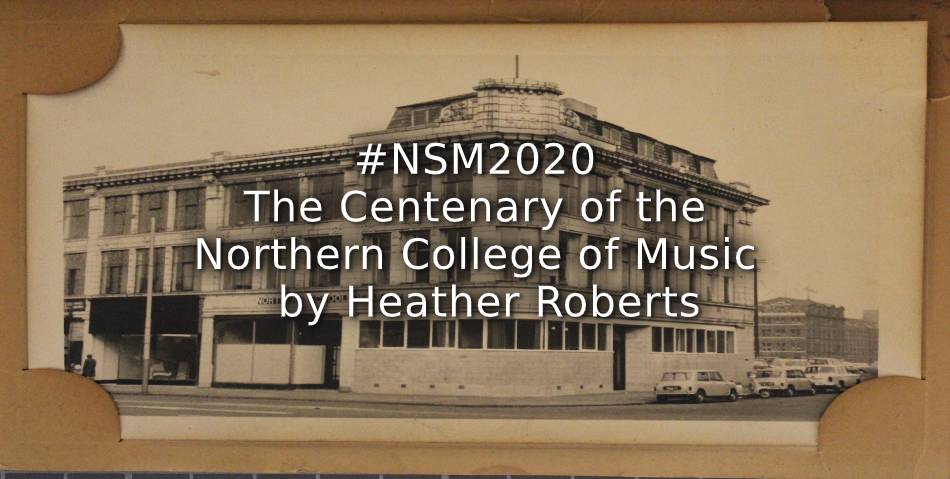
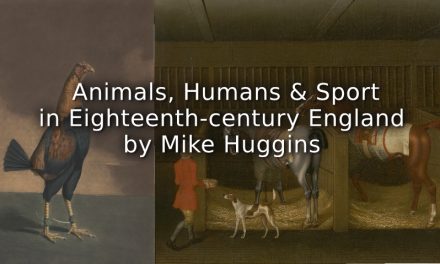

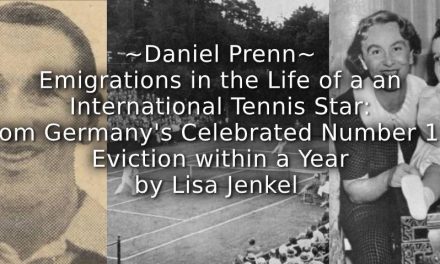

Good to read about an institution which has taught musicians to teach effectively in what sounds a really supportive, encouraging and constructive environment.